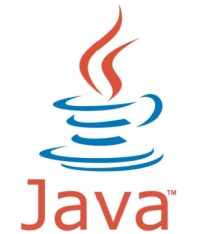 Have you ever wondered about what comes with the Java 64 bit download or its 32-bit alternative? Fortunately for users there is very little required to run Java applications smoothly on any machine.
Have you ever wondered about what comes with the Java 64 bit download or its 32-bit alternative? Fortunately for users there is very little required to run Java applications smoothly on any machine.
Java is one of the most popular programming languages run on several platforms and is used by most developers today. It’s been implemented in most computer and Android applications as well as the distributed programming environment on the internet. Developers typically start learning the code via a Java Tutorial like the one on the Tutorial Cup website.
Besides the fact that both languages run in your browser, Java and JavaScript are two different entities. Java is similar to the C++ programming language and allows the use of object-oriented programming techniques for software development. It can be used to build full applications that run on clients and servers connected to a network as well as applets that are embedded in web pages.
In order to run these applications, you must install Java runtime on your computer or a web plug-in on your web browser.
What is a Java Runtime Environment?
A virtual environment is required to be able to run any application or software. It implements several libraries and packages that are needed to make the software run smoothly without a hitch. Most devices feature an operating system, which is its runtime environment.
The operating system ensures that programs get the required access to various resources including class files, memory, and other dependencies for optimum performance on a particular platform. Everything changed for Java-based applications with the advent of the Java Runtime Environment (JRE). Other software systems are also beginning to adopt the model.
The computer hardware has layers of software that communicate with it, passing information that makes each component to behave in a certain way. These layers make up the operating system which could be likened to an onion, and its outer layers interact with other programs and applications directly.
The JRE acts like an entire platform but runs over an operating system. It also features layers of software that communicate with Java applications, providing automatic memory management. Software developers can now concentrate on another important aspect of the program without worrying about memory allocation.
Java applications do not need to be modified to run on different platforms as the JRE creates a base for it to work.
The Java Virtual Machine
The Java 64 bit download or its 32-bit alternative comes with a runtime engine that makes it possible to run Java-based programs on your computer.
Building a Java application for a particular machine language would imply that it can only run on that singular platform. The Java Virtual Machine (JVM) simulates a platform which can be implemented on systems that use different machine languages. It is a major component of the JRE that translates Java bytecode, making its implementation possible on any computer.
The JVM features a just-in-time (JIT) compiler which improves the speed of execution of Java programs or applets on clients, servers, and web browsers. Hence, Java applications can run smoothly on any platform or cached for reuse as if it is a native software. It acts as an interpreter that analyses Java bytecode and ensures that the data contained in it is understood by all systems with a native JVM.
Cross-Platform Compatibility
An interpreter or compiler is required in order to execute code that is written in most programming languages. Each program code is usually compiled to run on a particular machine with a specialized operating system. The compiled file can be copied into other machines but cannot be executed on those that run a different operating system.
Other operating systems often had a specialized interpreter or compiler which will run a modified code with a different structure that is suited for the target machine. A programmer would have to create unique versions of a source code which would be executable on each platform (machine and operating system).
Java made things a lot easier for programmers by changing the way compilers work. Instead of creating an object file as seen in other programming languages, the Java compiler generates bytecode which is then interpreted by the virtual machine. Programmers can now write code that can be executed on every platform as long as it has Java installed.\
Here is How Java Works
After writing your code in Java, the compiler which is also known as “javac”, creates a bytecode file. The generated bytecode file can be exported to different platforms where they can be interpreted. There is a unique Java interpreter that handles data execution according to the requirement of each platform. The program runs the way it should with the help of these interpreters.
For applets that run on webpages, the site should be visited using a web browser that has a Java plug-in installed. The applet is then downloaded and executed within that particular browser regardless of the platform that is in use. This has led to an increase in popularity of the Java programming language.
Final Thoughts
Java constantly receives updates that expand its use possibilities. The Java 64 bit download or its 32-bit alternative features several libraries and packages that reduce the work of having to write the entire code that a program needs. You can connect your program to these packages when the need arises for added efficiency. It is worthy of note that the Java plug-in and the Java Virtual Machine (JVM) are also components of the Java Runtime Environment (JRE) which must be installed on a platform to enable it run programs that are written in Java.
Shift Frequency © 2019 – Educational material
